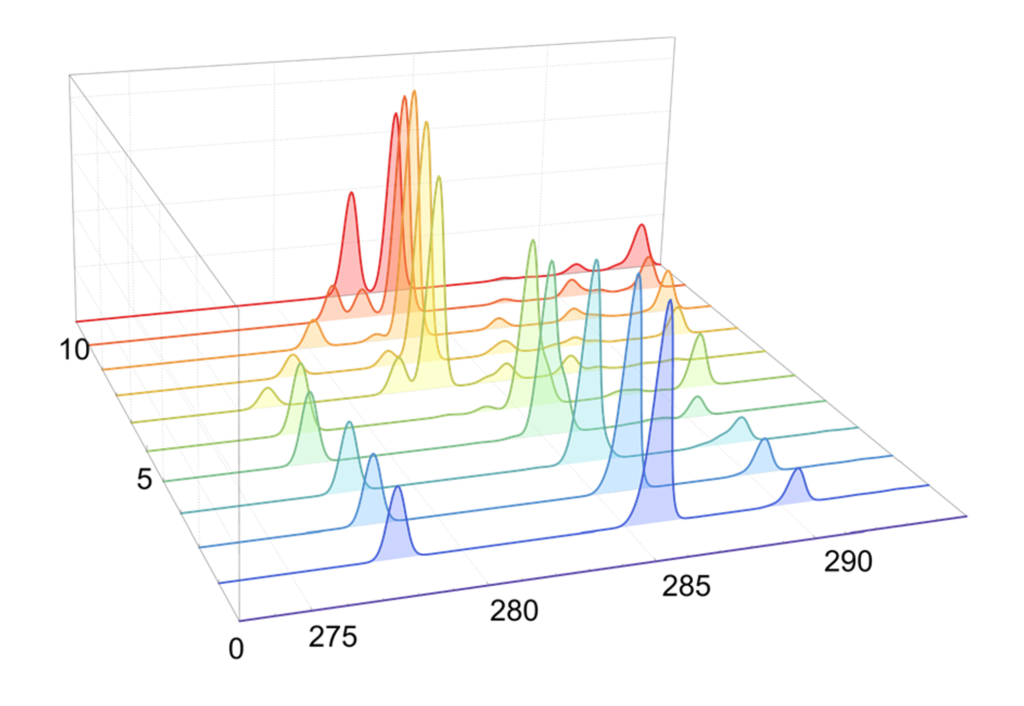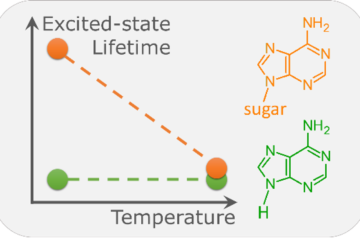X-Ray simulations reveal twisting in ethylene cation internal conversion.
In brief:
- We computed X-ray absorption spectrum (XAS) and the Auger-Meitner electronic spectrum (AES) for ethylene and ethylene cation at MS-RASPT2 level.
- The results indicate that twisted conical intersections play a role in the ultrafast deactivation of the excited cation, a prediction at odds with previous simulations based on CASSCF and TDDFT.
- We also showed that time-resolved AES measurements should be able to settle the debate.
The relaxation dynamics of the excited ethylene cation C2H4+ is likely the fastest internal conversion process ever reported experimentally, with relaxation from D1 to D0 occurring within 7 fs. Despite the apparent simplicity of this molecule, the underlying mechanism has been under debate for a decade or so.
In work led by Bruno Tenorio and in collaboration with Sonia Coriani, we have simulated the X-ray absorption spectrum (XAS) and the Auger-Meitner electronic spectrum (AES) of ethylene cation along the potential energy surface connecting the Franck-Condon minimum region to the conical intersections. The simulation protocol, also developed by Tenorio and co-authors, is based on the one-center approximation (OCA), using atomic radial Auger integrals, and implemented within MS-RASPT2.

Our work shows that this method, coupled with the nuclear ensemble approach, successfully reproduces the natural bandwidth structure of the experimental resonant Auger-Meitner decay spectra of (neutral) ethylene, which is not very well reproduced within the Franck-Condon approximation.
Coming to the cation, we focused on the transient feature at 284 eV, which appears in the time-resolved XAS experiments. Our highest-level XAS simulations using RASPT2 (see figure below) showed that it should only arise if the cation twists in D1. This prediction, however, directly disagrees with previous simulations based on CASSCF and TDDFT, which only reported internal conversion at nearly planar conical intersections.

We proposed a way to settle this discrepacy: Our analysis of the simulated Auger-Meitner decay spectra of the ethylene cation shows that dynamics though either planar or twisted conical intersections should yield distict AES. Thus, AES measurements resonant with the positions of specific peaks of the twisted conical intersection should be able to tell whether these intersections play or not a role in the dynamics.
These results and predictions showcase how AES can be applied to extract detailed information concerning the entanglement of the electronic and nuclear motion, which may motivate the experimental X-ray community to invest in developing time-resolved AES.
MB
[1] B. N. Cabral Tenorio, J. Pedersen, M. Barbatti, P. Decleva, S. Coriani, Auger–Meitner and X-ray Absorption Spectra of Ethylene Cation: Insight into Conical Intersection Dynamics, J. Phys. Chem. A (2023). 10.1021/acs.jpca.3c06386


